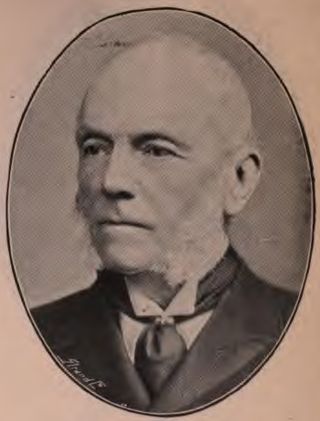Related Research Articles

Viscount Hereford is the oldest and only extant viscountcy in the Peerage of England, making the holder the Premier Viscount of England. The title was created in 1550 for Walter Devereux, 10th Baron Ferrers of Chartley.

Earl of Granard is a title in the Peerage of Ireland. It was created in 1684 for Arthur Forbes, 1st Viscount Granard. He was a lieutenant-general in the army and served as Marshal of the Army in Ireland after the Restoration and was later Lord Justice of Ireland. He had already succeeded his father as second Baronet of Castle Forbes and been created Baron Clanehugh and Viscount Granard in 1675, also in the Peerage of Ireland. The baronetcy, of Castle Forbes in county Longford, was created in the Baronetage of Nova Scotia on 29 September 1628 for his father, Arthur Forbes.

Earl of Chichester is a title that has been created three times, twice in the Peerage of England and once in the Peerage of the United Kingdom. The current title was created in the Peerage of the United Kingdom in 1801 for Thomas Pelham, 2nd Baron Pelham of Stanmer.

Earl of Verulam is a title in the Peerage of the United Kingdom. It was created in 1815 for James Grimston, 4th Viscount Grimston. He was made Viscount Grimston at the same time. Verulam had previously represented St Albans in the House of Commons. In 1808 he had also succeeded his maternal cousin as tenth Lord Forrester. He was succeeded by his son, the second Earl.
Baron Wrottesley, of Wrottesley in the County of Stafford, is a title in the Peerage of the United Kingdom. It was created on 11 July 1838 for Sir John Wrottesley, 9th Baronet. He was a Major-General in the Army and also represented Lichfield, Staffordshire and Staffordshire South in House of Commons. The Wrottesley family's original patronymic was 'de Verdun', which meant that the creation of the title Baron Wrottesley represented the third barony created by a branch of the de Verdun family in England. The other two were established by Theobald de Verdun, 1st Baron Verdun of Alton Castle and Sir John de Verdon, 1st Baron Verdon, lord of Brixworth in Northamptonshire and Bressingham in Norfolk.
The Warburton Baronetcy, of Arley in the County of Chester, was a title in the Baronetage of England. It was created on 27 June 1660 by Charles II for George Warburton, of Arley Hall, Cheshire, whose great-uncle had been Sergeant at Law and a Justice of Common Pleas in the time of Charles I. The Warburton family removed from Warburton, Cheshire to Arley in the 14th century. The third Baronet was a Knight of the Shire for Cheshire. The title became extinct on the death of the fifth Baronet in 1813. The Cheshire estates passed into the Egerton-Warburton family and then to Viscount Ashbrook.
William Walter may refer to:
The Walter Baronetcy, of Saresden in the County of Oxford, was a title in the Baronetage of England. It was created on 16 August 1641 for William Walter, previously Member of Parliament for Weobly. The third Baronet sat as member of parliament for Appleby and Oxford. The title became extinct on the death of the fourth Baronet in 1731.
The Sandford Baronetcy, of Howgill in the County of London, was a title in the Baronetage of England. It was created on 11 August 1641 for Thomas Sandford, subsequently Member of Parliament for Cockermouth. The second Baronet was murdered on 8 September 1675, the same day his son Richard, the third Baronet, was born. The third Baronet later represented Westmorland, Morpeth and Appleby in Parliament. The title became extinct on his death in 1723.
The Henn, later Hene Baronetcy, of Winkfield in the County of Berkshire, was a title in the Baronetage of England. It was created on 1 October 1642 for Henry Henn. The second and subsequent Baronets used the surname Hene. The title became extinct on the death of the fourth Baronet.

The Long, later Tylney-Long Baronetcy, of Westminster in the County of London, was a title in the Baronetage of England. It was created in 1662 for Robert Long.

There have been five baronetcies created for persons with the surname Morgan, two in the Baronetage of England, one in the Baronetage of Great Britain and two in the Baronetage of the United Kingdom. All five creations are extinct.
Walter Hendley may refer to:

There have been two baronetcies created for members of the Pryse family, one in the Baronetage of England and one in the Baronetage of the United Kingdom. Both creations are extinct.
Three Steuart baronetcies were given to three brothers, the first, fourth, and seventh of the seven sons of Sir James Steuart, knight, Lord Provost of Edinburgh, who died in 1681.
The Dean of Kildare is based at The Cathedral Church of St Brigid, Kildare in the united Diocese of Meath and Kildare within the Church of Ireland.
Sir William Walter, 1st Baronet was an English lawyer and politician who sat in the House of Commons from 1628 to 1629.
Sir Thomas Hendley (1580–1656) was an English landholder who served as Sheriff of Kent.
The Hendley family were English landowners in the county of Kent from before 1344 until the last male member of the main branch died childless and insane in 1798. They originally held the manor of Coursehorn in the parish of Cranbrook and later acquired the estate of Gore Court in the parish of Otham. Members of the family, which included knights and a baronet, served as a Member of Parliament and as High Sheriff of Kent.

Sir Robert Bradshaigh, 3rd Baronet (1675–1747) of Haigh Hall near Wigan was an English landowner and Tory politician who sat in the English House of Commons and British House of Commons for 52 years from 1695 to 1747.
References
- ↑ Berry, William, Encyclopaedia Heraldica Or Complete Dictionary of Heraldry, Volume 2